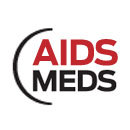by Tim Horn at AIDSmeds.com
While gene therapies that render the immune system impervious to HIV and drugs that potentially purge the virus from resting CD4 cells continue to be watched closely by AIDS cure researchers and advocates, therapeutic vaccines may serve an important supporting role in these efforts, according to a commentarypublished by activist Richard Jefferys in the Spring 2012 TAGline newsletter.
“After a period in which enthusiasm regarding the prospects for therapeutic vaccines waned,” Jefferys writes, “the recent resurgence in interest in research aiming to cure HIV infection has offered new reasons to pursue their development.”
Notable therapeutic vaccines for the virus use HIV particles, sometimes paired with other viruses, or largely intact HIV, to jumpstart the immune system’s perceived ability to control viral replication in the body. Such vaccines have been conceptualized and explored since the mid-1980s. “But the first efforts toward this goal quickly mired therapeutic vaccine research in controversy,” Jefferys writes, “casting an initial pall across the field that was compounded by the failure of any candidate to show significant efficacy.”
Jefferys explains that therapeutic vaccines are now in their third—and potentially most critical—era of development, noting that the first two eras didn’t pan out for important reasons.
In the first era, dating back to the 1980s and early 1990s, therapeutic vaccine candidates of the day faced significant hurdles that were unknown at the time. For example, it was once assumed that HIV is mostly dormant during the asymptomatic and untreated years of infection and that CD4 cells lacked the ability to respond to HIV. Subesequent findings proving these hypotheses wrong, Jefferys writes, “seriously called into question the idea that adding more HIV antigens into the mix via therapeutic vaccination—when the virus itself was failing to induce protective immunity—would be beneficial.”
In the second era, with viral load technology and combination antiretroviral therapy (ART) widely available, therapeutic vaccination plans evolved. One approach was to bolster the immune response to HIV while study volunteers were keeping their viral loads undetectable using available ARVs, followed by treatment interruptions to test the immune system’s ability to control HIV replication in the absence of therapy.
Click here to read the full article at AIDSmed.com
